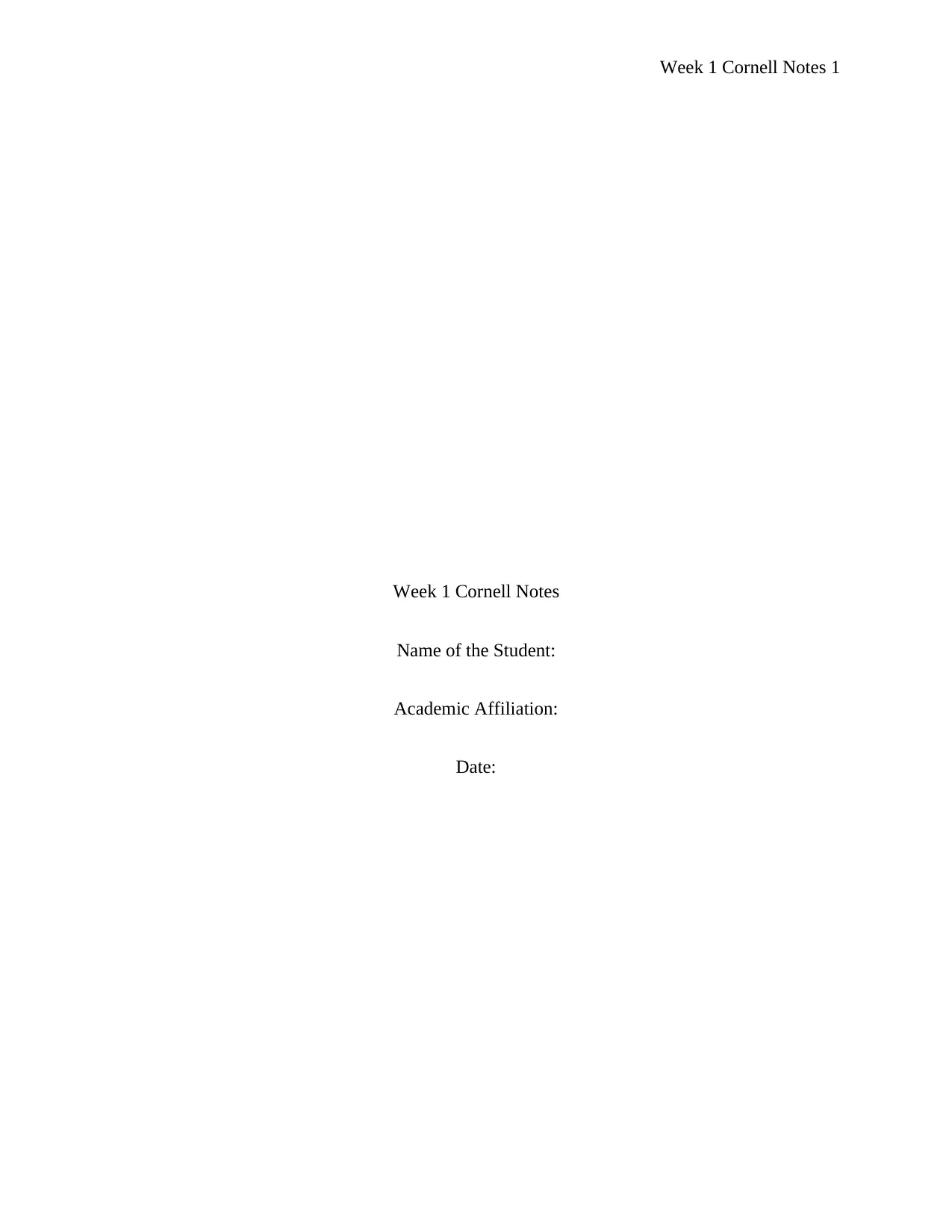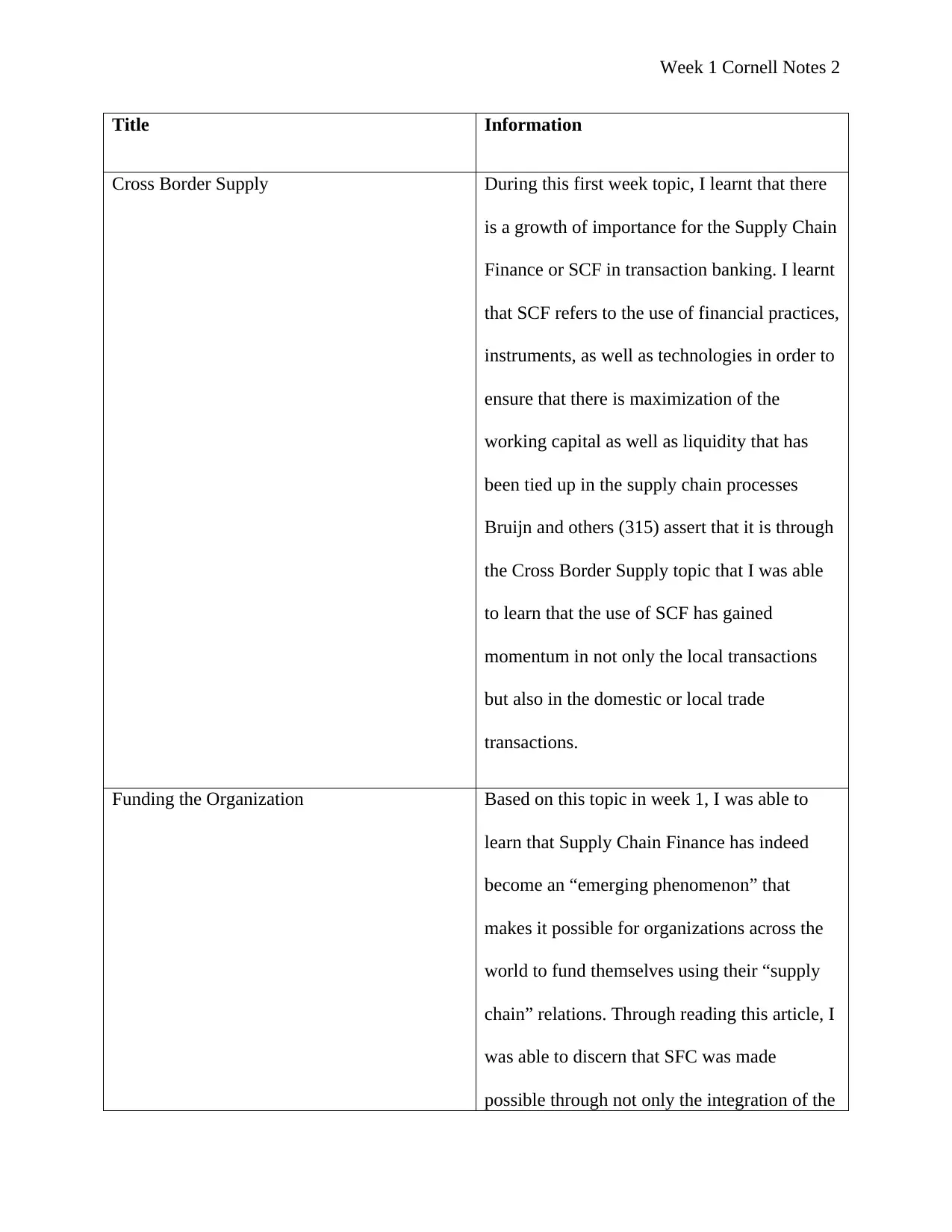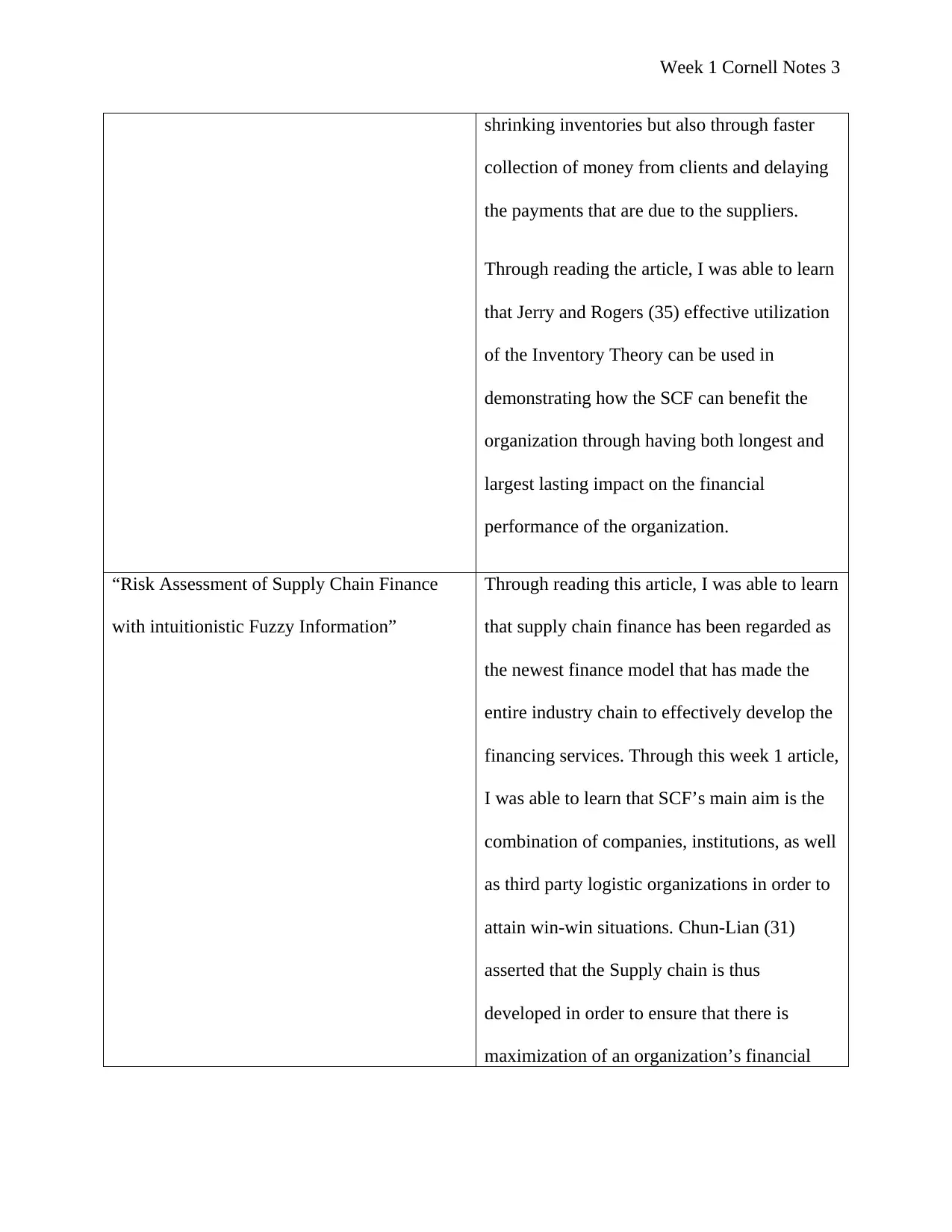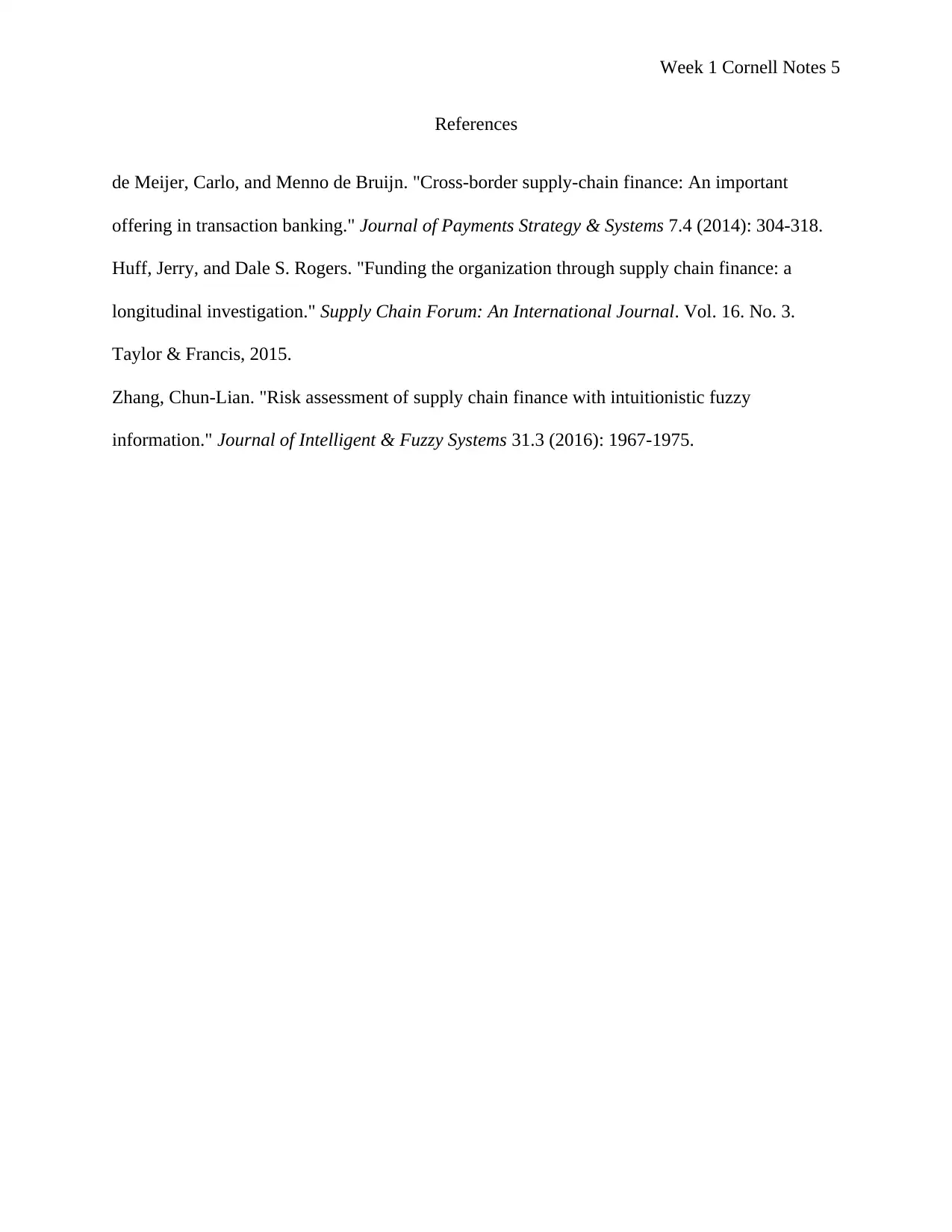University Name: Supply Chain Finance - Week 1 Cornell Notes
VerifiedAdded on 2020/05/16
|5
|619
|64
Homework Assignment
AI Summary
This assignment presents Cornell Notes from Week 1, focusing on Supply Chain Finance (SCF). The notes cover key aspects such as the growth of SCF in transaction banking, the importance of maximizing working capital, and the role of cross-border supply chains. The student explores how SCF helps organizations fund themselves, improve liquidity, and optimize financial performance by leveraging supply chain relationships. The assignment references articles discussing the use of SCF, its integration with inventory management, and the benefits of SCF for financial performance. The notes summarize the core ideas from the readings, including the impact of SCF on financial value and risk assessment.
1 out of 5






![[object Object]](/_next/static/media/star-bottom.7253800d.svg)